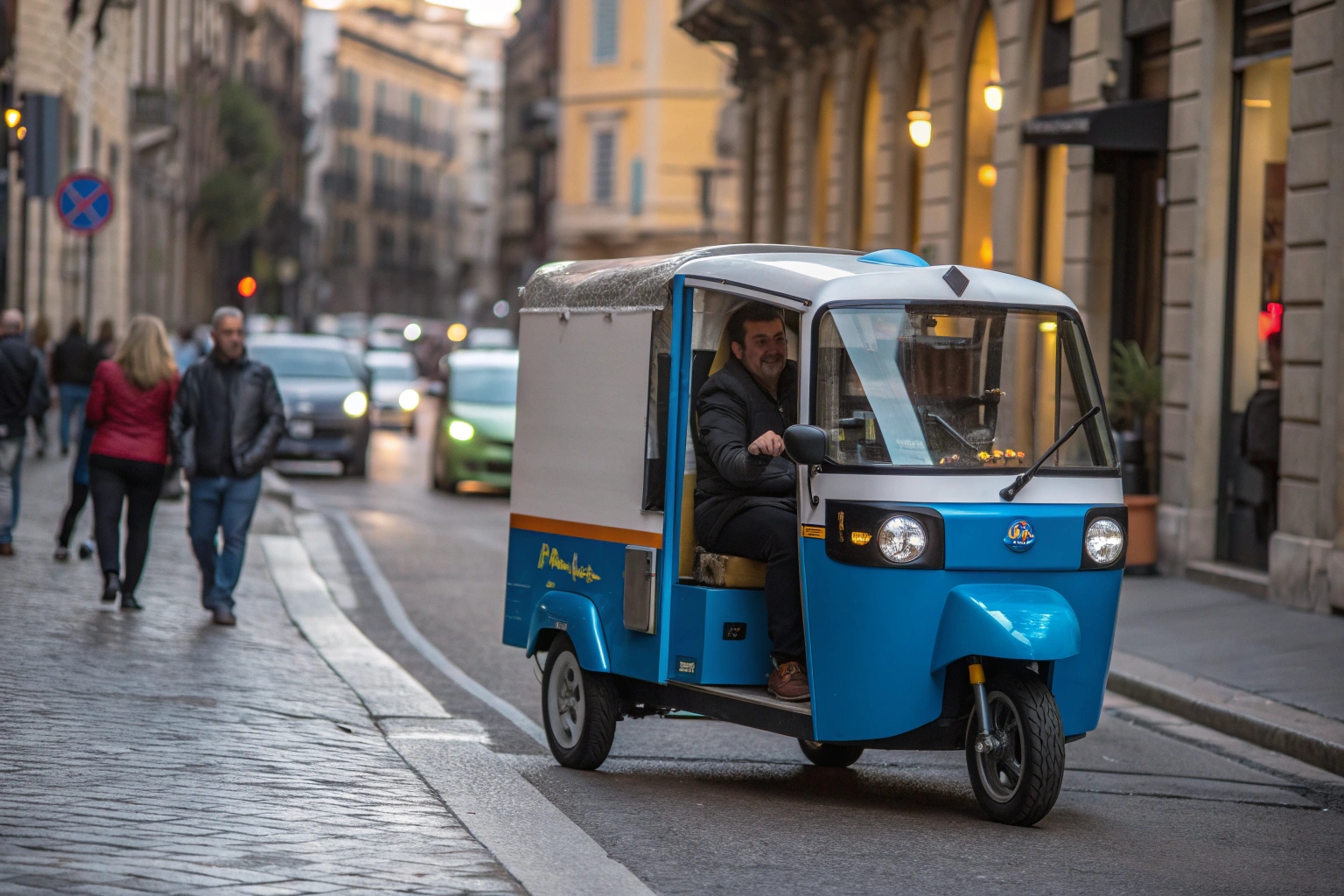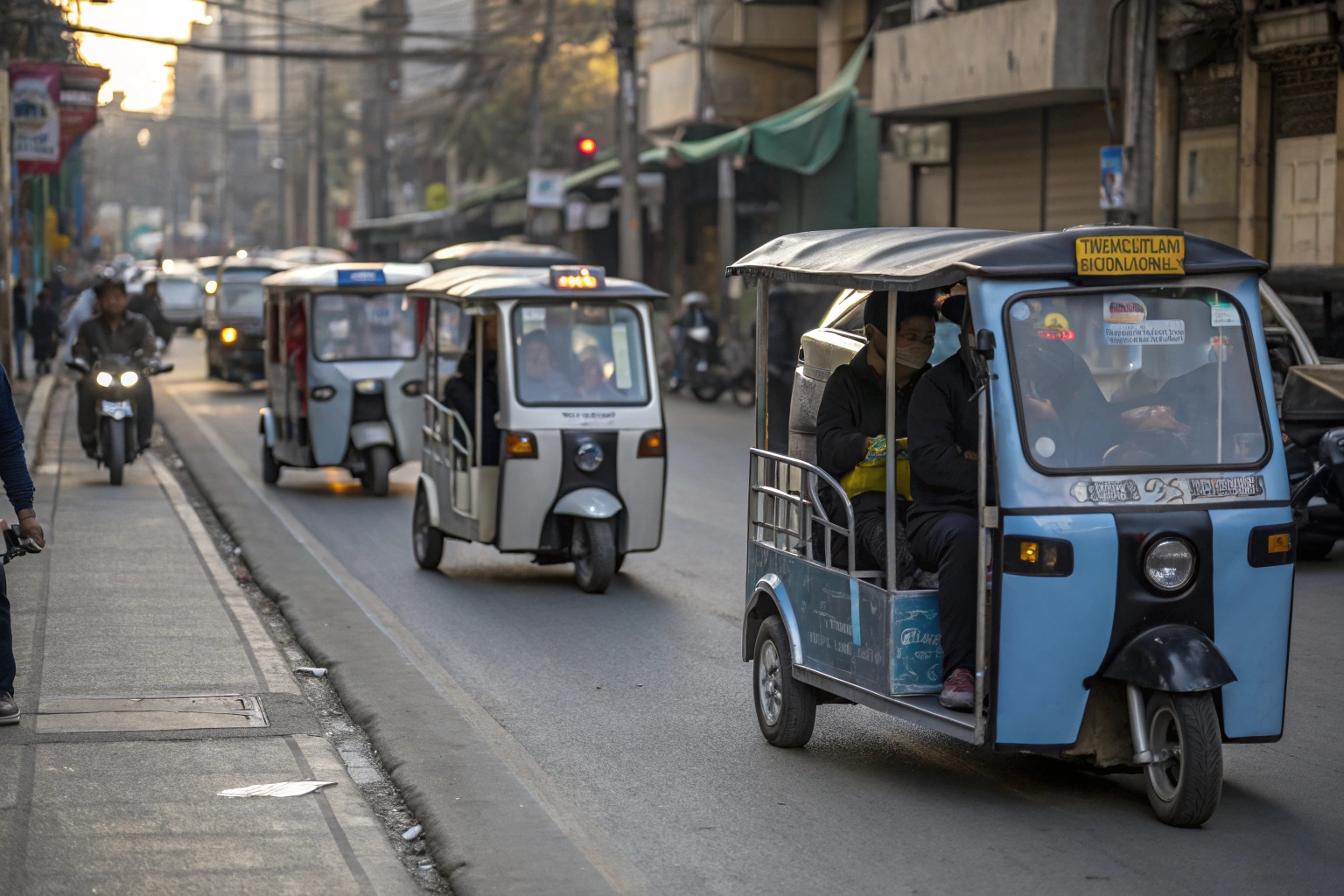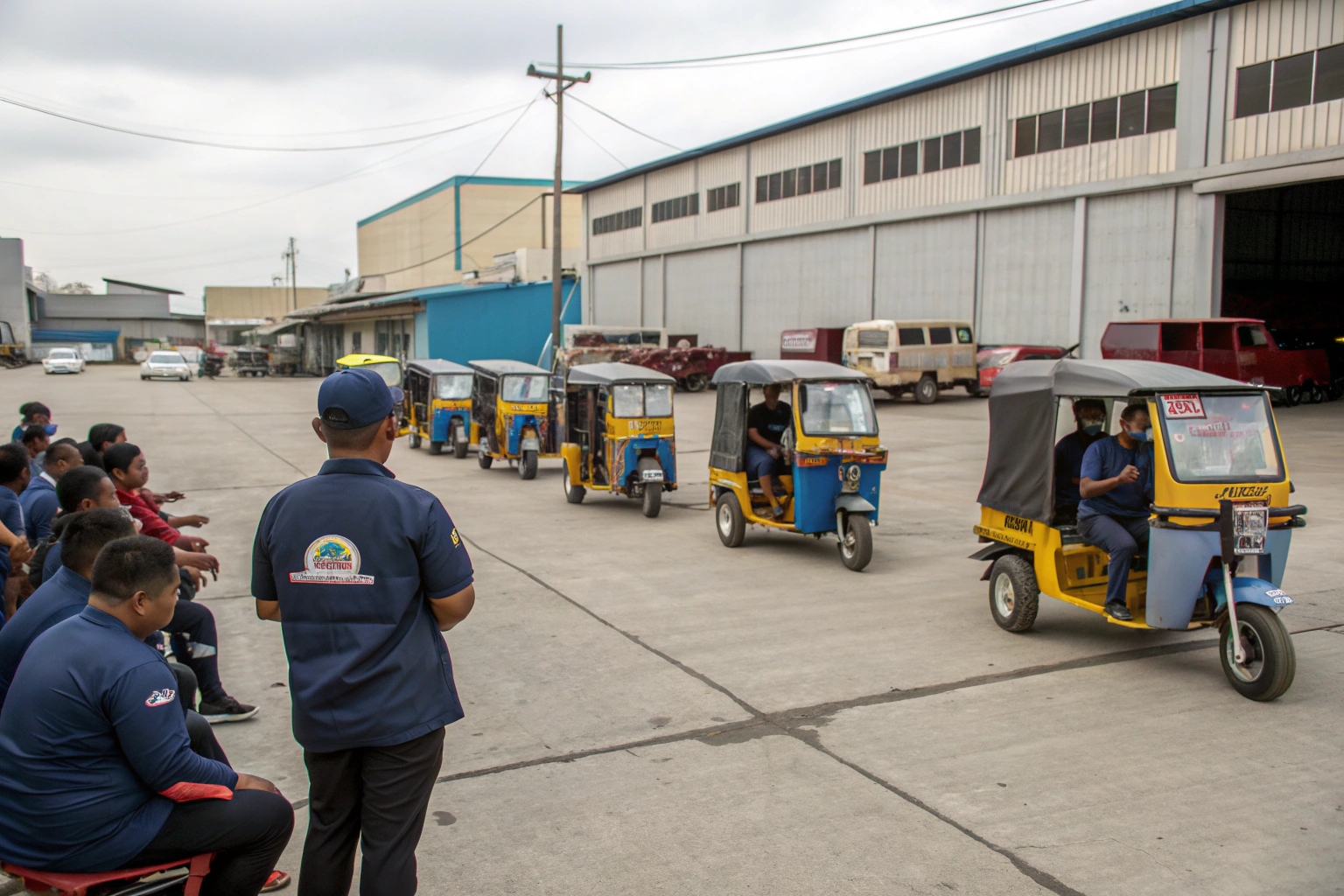Stuck paying high fuel bills for delivery vans that are too slow in city traffic? These inefficiencies directly chip away at your delivery profits and customer satisfaction every single day.
While they won't completely replace large vans for every job, electric tricycle vans are the clear winner for most urban routes. They offer huge cost savings, better agility in traffic, and are perfectly suited for the majority of last-mile delivery tasks.

As a factory owner, this is a question I get almost every day from fleet managers around the world. They see the potential but wonder if a three-wheeled vehicle can truly do the job of their trusted four-wheeled vans. The answer isn't a simple "yes" or "no." It's about using the right tool for the right job. For dense, congested cities, the tricycle van isn't just a replacement; it's a strategic upgrade. Let's break down the practical realities.
How Do Electric Tricycle Vans Compare to Traditional Vans in Operating Costs?
The cost of running your van fleet is high and always climbing. Unpredictable fuel prices and frequent, expensive engine maintenance can destroy your budget and make profitability a constant struggle.
Electric tricycle vans cut running costs by 40–60% through lower energy use, simpler maintenance, and reduced regulatory fees, offering a much faster return on investment.

The single biggest reason our clients switch is the dramatic reduction in operational costs. It's an advantage you feel on your balance sheet almost immediately. A traditional van has hundreds of moving parts in its engine and transmission that require constant service. Our electric tuk tuk vehicles have a simple electric motor and battery. There are no oil changes, no fan belts to replace, and no exhaust systems to fix. The cost difference per kilometer is significant. When you multiply that by dozens of vehicles making deliveries all day, the savings become a powerful competitive advantage.
| Cost Metric | Traditional Van | Sepeda motor | Van Roda Tiga Listrik |
|---|---|---|---|
| Cost Per Km | Tinggi | Rendah | Sangat Rendah |
| Pemeliharaan | Sering & High Cost | Sedang | Infrequent & Low Cost |
| Annual Expenses | Sangat Tinggi | Rendah-Sedang | Sangat Rendah |
Can Electric Tricycle Vans Handle the Same Cargo Loads as Small Vans?
You might worry that an electric tricycle is simply too small for your cargo needs. The fear is that switching means making more trips, which would cancel out any efficiency gains.
They carry impressive loads of 300–800 kg with 2–5 cubic meters of cargo space, making them perfect for parcels, groceries, and equipment, though not for heavy, palletized freight.

It's a valid concern, and it's important to be realistic about capacity. A Tuk Truck will not replace a large van used for moving furniture. However, for the vast majority of urban logistics—the small to medium-sized packages that make up most deliveries—they are perfectly sized. At our factory, we build different models on the same reliable chassis to meet specific cargo needs. This allows our clients to choose the right configuration for their business, whether it's for e-commerce or a mobile food business.
- Parcels & E-commerce: The enclosed tricycle van is the most popular model, offering secure, all-weather transport for daily delivery routes.
- Mobile Vending: The tuk tuk food truck configuration allows for a complete mobile kitchen or coffee bar setup.
- Retail & Tools: An open-bed tricycle pickup or tricycle truck is ideal for local hardware stores, landscapers, or for replenishing stock at small shops.
In Which Urban Scenarios Do Electric Tricycle Vans Outperform Traditional Vans?
Your delivery vans get stuck in traffic, can't find parking, and are sometimes banned from city centers. Every minute wasted means a late delivery, a frustrated driver, and an unhappy customer.
These electric tricycle van excel in narrow streets, low-emission zones, and congested urban routes where vans face access restrictions, high fees, or simply cannot fit.

This is where the van roda tiga listrik doesn't just compete; it dominates. It was born for the chaotic urban environment. I've visited clients in cities from Manila to Bogotá, and the story is the same: the vehicle that can navigate the back alleys and find parking easily is the one that wins. Vans are liabilities in these environments. A tuk tuk car is an asset. They can often use routes that are inaccessible to larger vehicles, shaving critical time off each delivery. As more cities restrict vehicle access based on size and emissions, the tricycle van becomes the key to maintaining inner-city service.
| Urban Scenario | Traditional Van Performance | Electric Tricycle Van Performance |
|---|---|---|
| Narrow Alleys | Inaccessible | Bagus sekali |
| High-Traffic Zones | Poor (Gets Stuck) | Good (Nimble) |
| Parking Areas | Difficult & Slow | Very Easy & Fast |
| Low-Emission Zones | Restricted or Banned | Fully Permitted |
How Can Fleets Transition from Traditional Vans to Electric Tricycle Vans?
The idea of overhauling your entire fleet feels risky and complicated. You have to think about training, charging, and how to even begin without disrupting your current operations.
Start with a phased approach: deploy a small pilot program on your shortest routes, train a core group of tricycle pickup drivers, and scale up as you prove the cost savings and operational benefits.

A successful transition is all about smart planning, not a sudden switch. I always advise my new fleet customers to start small and prove the concept within their own operations. This builds confidence and provides you with real-world data to justify a larger investment. A step-by-step approach removes the risk and ensures a smooth integration.
- Analyze Your Routes: Identify your shortest, highest-density routes. These are the routes where a vehicle with a range of 80-100 km can complete its daily tasks easily and are perfect for your first electric tricycles.
- Start a Pilot: Begin with just 2-3 electric tricycle vans. Use them on your selected routes and collect data. Measure fuel savings, maintenance costs, and delivery times compared to your traditional vans.
- Train Your Team: The vehicles are easy to drive, but your staff needs basic training on charging routines and simple maintenance checks. Get your mechanics familiar with the simple electric powertrain.
- Scale Intelligently: Once your pilot program has proven successful, use the data to create a larger rollout plan. You can then confidently expand the electric portion of your fleet, route by route.
Kesimpulan
Electric tricycle vans are not a total replacement for traditional vans, but they are a smarter, more profitable solution for most urban delivery routes in today's cities.

